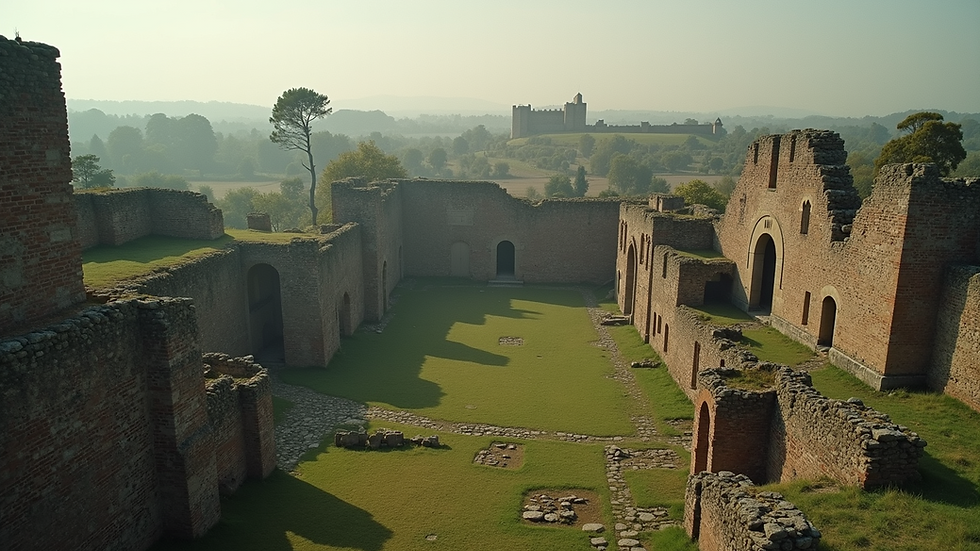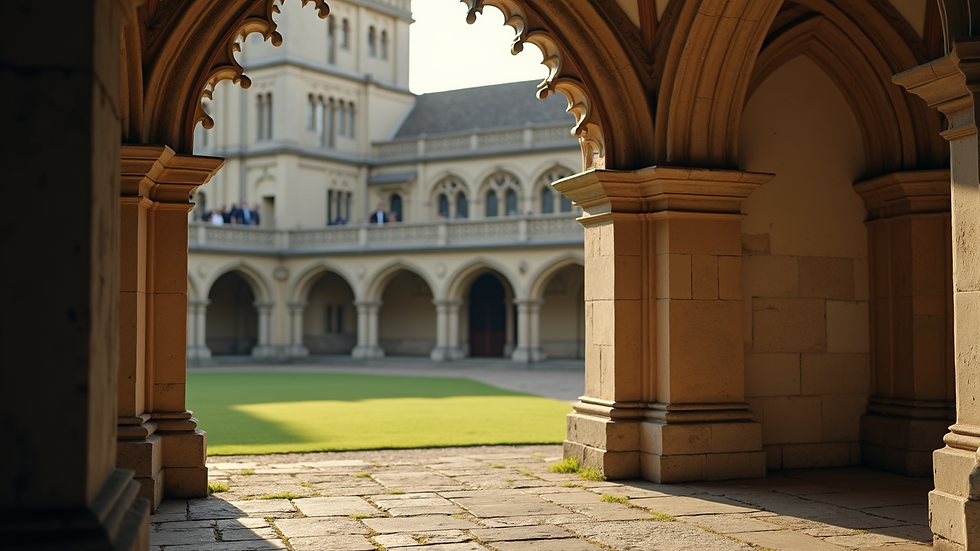The Enduring Legacy of London's Roman Forts Amid Tudor Expansion in 1552
- Loremaster

- Aug 10
- 3 min read
The summer of 1552 was a thrilling time in London's history. Under King Edward Tudor, the city was blossoming with new developments. As Tudor expansion took hold, the remnants of Roman architecture, especially the storied fort of Londinium, continued to influence the city’s landscape and identity. This blog post dives into the compelling legacy of these Roman ruins and their impact on emerging settlements like Sydenham during this transformative period.
The Roman Fort of Londinium
Constructed between AD 110 and 120, the Roman fort of Londinium was a massive square structure, measuring 200 meters on each side. Originally built as a military base, the fort provided crucial protection for a city that was rapidly expanding. Its formidable walls were crafted from solid materials, designed to withstand attacks, and assert Roman power in the area.
The fort’s strategic location allowed it to control key trade routes and access to the River Thames, vital for commerce. For instance, just as the Thames facilitated trade for around 40% of London's goods during this period, Londinium anchored this crucial economic lifeline. As the city evolved, the fort stood as a powerful symbol of Roman engineering and resilience.

The fort was not just a relic. As Tudor England began to rise, its historical significance became a part of the city's identity, instilling a sense of continuity among its citizens.
Sydenham: A Settlement in Development
While Londinium symbolized Roman authority, the nearby settlement of Sydenham, originally known as Sippenham, was carving out its own identity. Residents primarily engaged in agriculture, raising livestock, and gathering wood, mirroring the rural lifestyle of the era.
Characterized by open fields and rich woodlands, Sydenham was a hub for local resources. Interestingly, during the Tudor period, agricultural output in the region increased by about 15%, highlighting the settlement's contributions to the thriving economy of London. As Tudor leadership sought to expand its influence, rural communities like Sydenham began to flourish and play a vital role in the area's overall prosperity.

The growth of Sydenham showcased the dynamic contrast between urban and rural life in London. As population pressure increased in the city, the resources supplied by settlements like Sydenham became invaluable.
The Influence of Roman Architecture on Tudor England
The Roman ruins, especially the fort of Londinium, significantly influenced the architectural landscape of Tudor England. Many Tudor builders were inspired to incorporate elements of classical design into their structures, creating a harmonious blend of old and new.
This can be vividly seen in the emergence of grand Tudor structures featuring symmetrical designs, arched windows, and intricate stonework, akin to Roman buildings. For example, the famous Hampton Court Palace, built during the Tudor period, exemplifies how Roman engineering informed the aesthetics of Tudor architecture.

As London continued to grow, the legacy of the Roman fort became a wellspring of inspiration for artists and historians. The blend of ancient ruins with Tudor innovation created a cultural landscape that helped define the city for generations.
The Role of Roman Ruins in Shaping Identity
The Roman ruins at Londinium played a key role in shaping London’s identity during the Tudor expansion. As the city embraced its historical roots, the fort emerged as a symbol of resilience.
Amid significant political and social changes, the fort reminded citizens of the might of the Roman Empire and its lasting contribution to the region. By 1552, the citizens of London began crafting a collective identity that connected them not just to their own recent past, but also to the glory and achievements of ancient Rome.
This evolving sense of identity was especially vital during Edward Tudor's reign. The young king leveraged this historical context to bolster his authority, using the fort’s impressive legacy as a backdrop for his narrative of power and progress.
Reflecting on London's Historical Narrative
The summer of 1552 marked a crucial chapter in London's story. With the expansion of Tudor England coinciding with the lasting legacy of Roman architecture, the fort of Londinium continued to influence the city's landscape and identity.
As settlements like Sydenham developed, the re-emergence of Roman ruins became clear. Their presence inspired a new generation of builders and thinkers, weaving together the threads of ancient and modern into a rich tapestry of culture and history.
In this reflection, it becomes evident that the fort of Londinium was more than just an artifact; it was a living part of London's ongoing narrative. Its legacy resonates today, serving as a reminder of the city’s deep historical roots and the lasting impact of its architectural heritage.








Comments